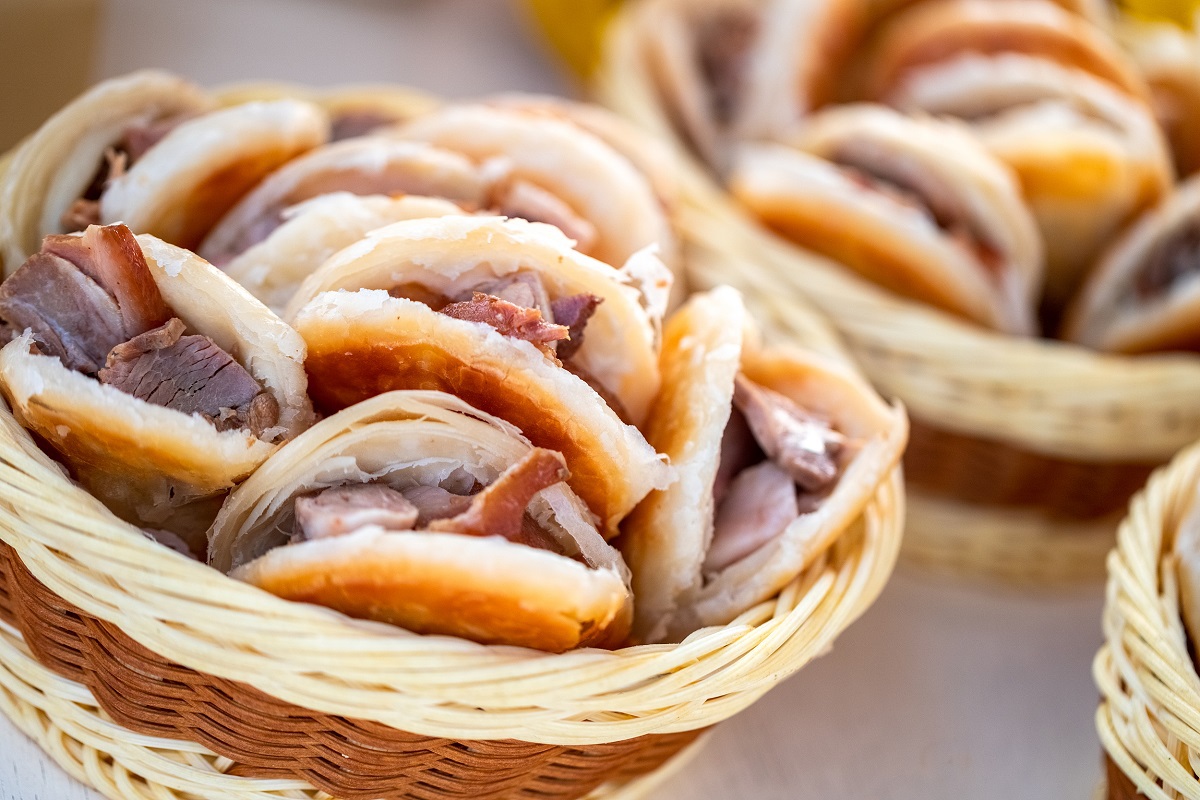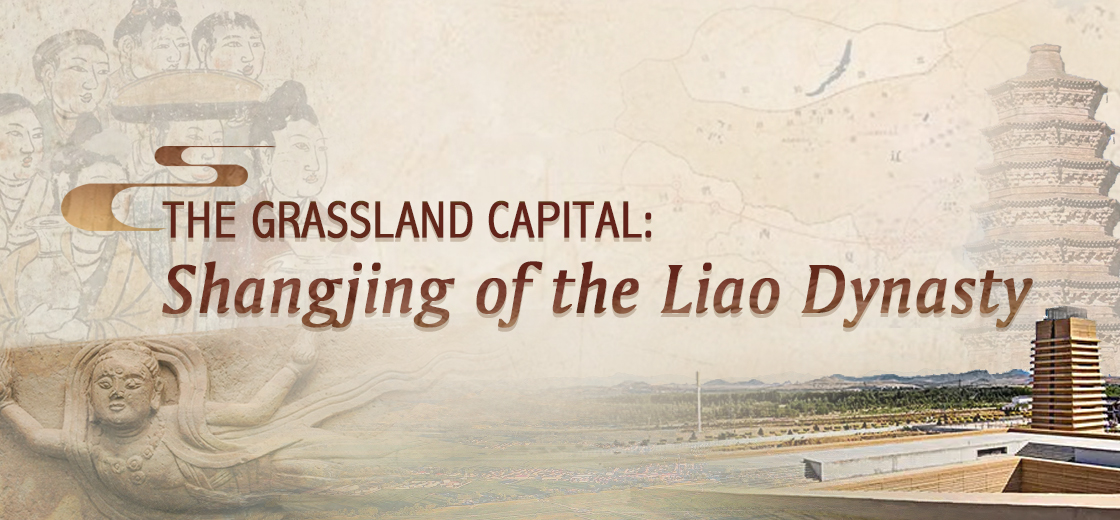Preface
Shangjing (upper capital), in Northeast China, was one of the places that the nomadic Khitan people inhabited. It served as the capital of the Khitan Liao Dynasty from 918 to 1120, and was the first capital built by the Khitans on the grasslands in North China.
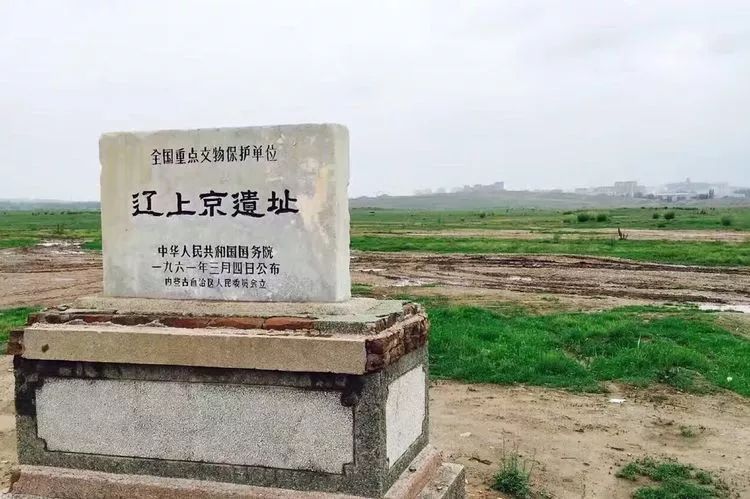
The Liao Dynasty Shangjing ruins, located in southern Lindong town, Baarin Left Banner, Inner Mongolia, have been included as one of China's major sites of historical value and have been inscribed on the World Heritage Tentative List. Furthermore, it was nominated as a National Archaeological Site Park on Dec 17, 2013.
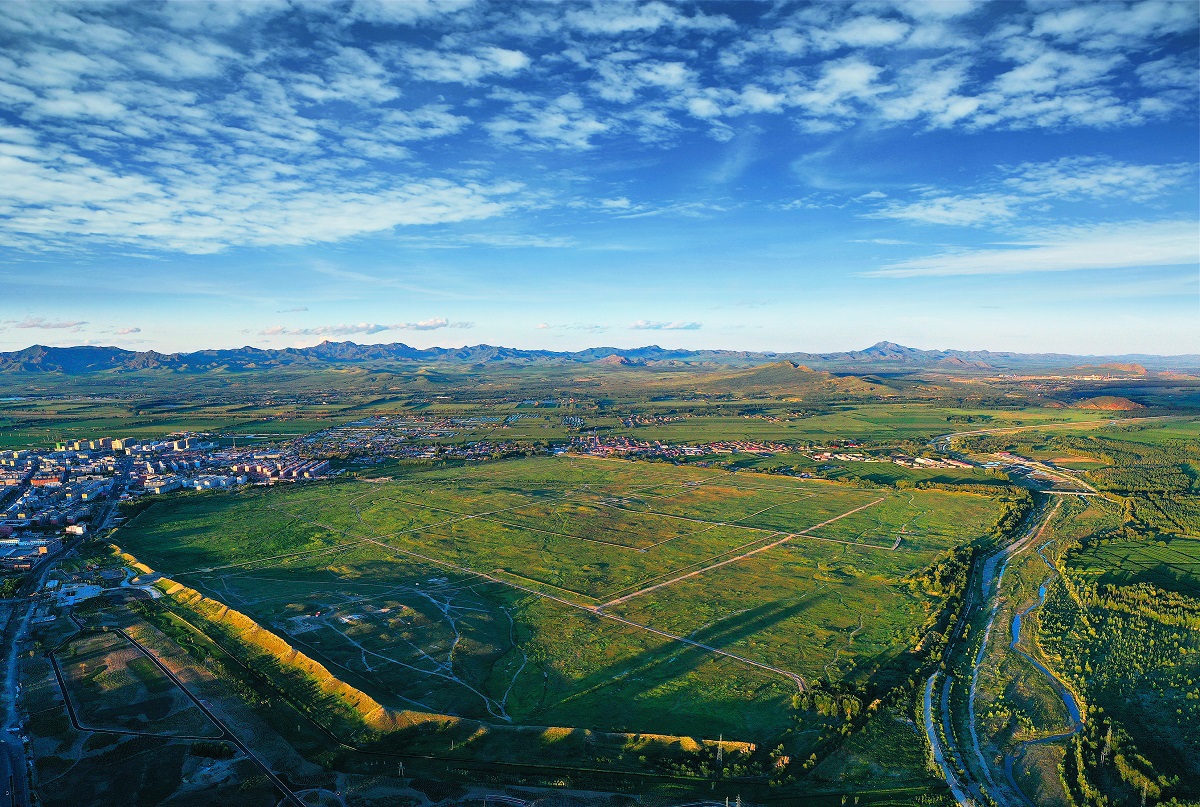
Unique city layout
The Liao Dynasty’s Shangjing consisted of two connecting parts: the imperial city in the north and the city for the Han, Bohai, and Uygur people in the south. They covered an area of about 500 hectares and were connected by city walls, forming a structure like the Chinese character “日”, meaning “the sun”. However, due to erosion from the river, the two cities have since been separated into two parts.
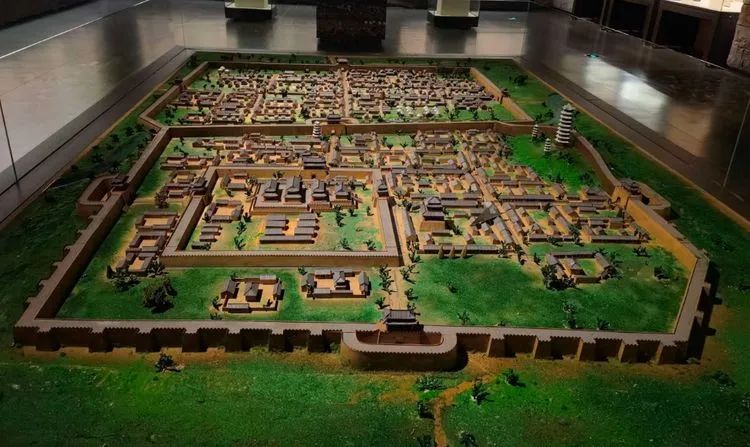
Shangjing was one of the origins of ancient civilizations in North China, whose construction not only verifies the development of a nomadic economy and politics on the grassland, but also reflects the exchanges between and fusion of different ethnic cultures.
Starting point of the Grassland Silk Road
Khitan people lived on and rose from the grasslands in North China. Yelyu Abaoji, Emperor Taizu (916-926) of the Liao, twice led conquests toward the western areas from the eastern grasslands, demonstrating the importance of establishing direct contact with the regimes in Central Asia, West Asia and the Middle East. He extended the western boundary of the Liao Empire to the Hexi Corridor by annexing Uygur regimes located at key places along the Silk Road, effectively unblocking the ancient Silk Road all the way to Shangjing.
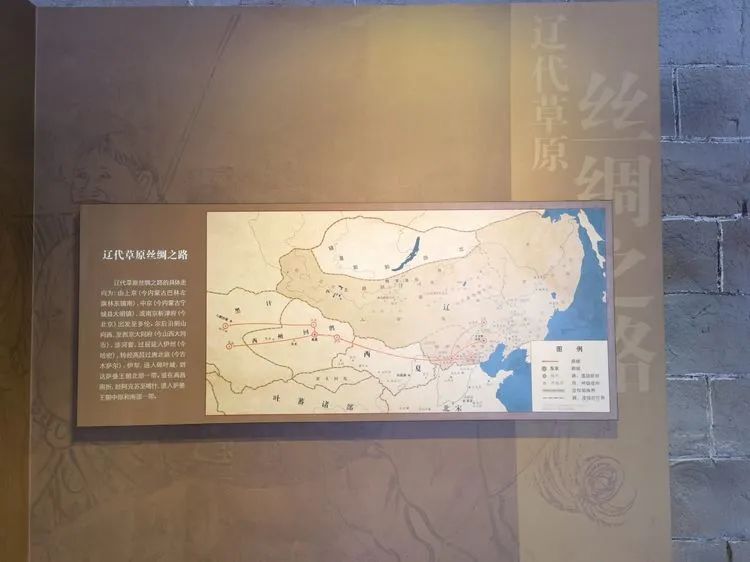
The Liao Dynasty Grassland Silk Road started in Shangjing and Zhongjing (central capital) and extended westward along the Yinshan Mountains until it reached Xijing (west capital) (present-day Datong, Shanxi province). Then it passed the Hetao and Juyan and entered Yizhou (present-day Hami, Xinjiang Uygur autonomous region). After that, it turned to Gaochang, passed Beiting (today’s Jimsar in Xinjiang) and Ili and entered Suyab in present-day Kyrgyzstan, eventually reaching the north of the Samanid Empire (819-999). The other route of the Grassland Silk Road was taken southward from Gaochang, passed Aksu and Kashgar in Xinjiang, and arrived at the central and southern part of the Samanid Empire.
Mysterious Khitan writing system
The written language of the Khitan people discovered so far includes the large script (derived from the Han Chinese characters) and the small script (based on the Uygur syllabary writing system). Both scripts, together with Han Chinese characters, were widely employed at that time, which promoted cultural exchanges between the Khitans and other countries.

Rare silver coin with Khitan inscriptions
As a treasure of the Liao Dynasty Shangjing Museum, the silver coin with Khitan inscriptions was discovered in the west of the Liao Dynasty Shangjing site. The coin is round with a wide rim and has a square hole. Four Khitan large scripts are carved in relief on its front, and four Khitan small scripts are engraved on the reverse. Experts’ research suggests that the coin was used for sacrificial rituals or expressing good wishes rather than circulation. There are two ways to interpret the Khitan large script, and it is supposed that the Khitan small script might be blessing phrases, but the specific meanings need further examination.
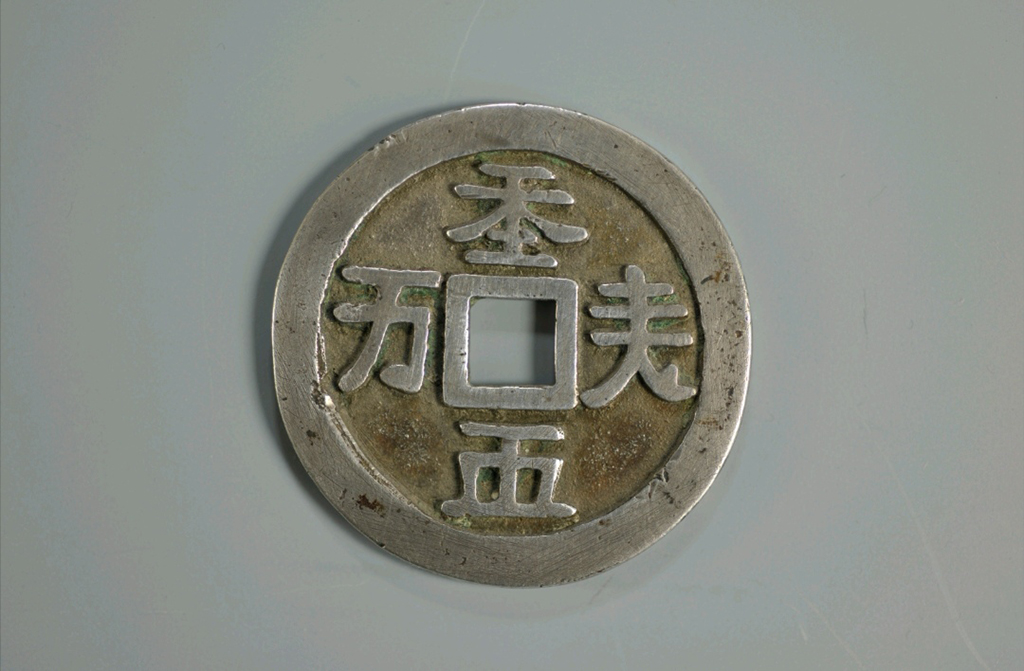
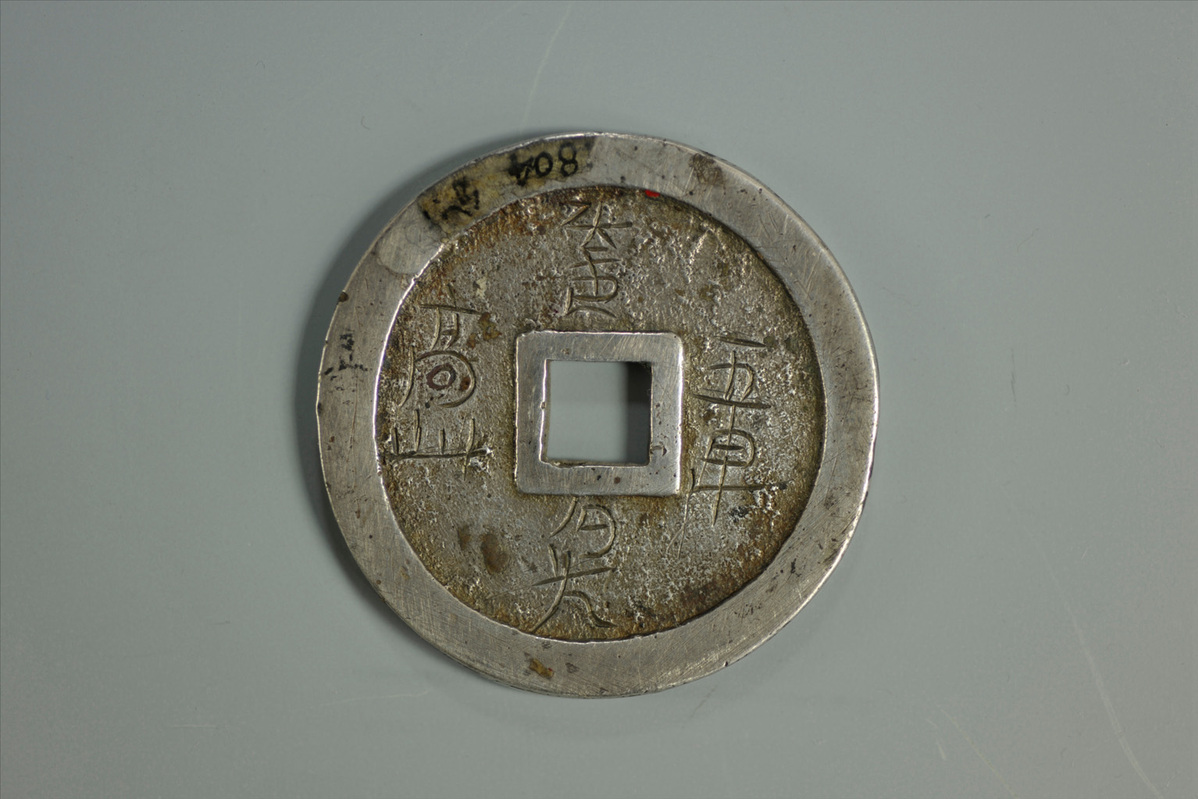
Splendid Buddhist culture
The Liao Dynasty continued the Buddhist tradition from the Tang Dynasty (618-907) and became the Buddhist cultural center of East Asia between the 10th and 12th centuries. Within its former territory, a large number of grand-scale palaces, pagodas, statues and religious apparatus have been discovered.
The Northern Pagoda, found on a mound two kilometers to the north of the Shangjing ruins, is a 15-meter-high and five-floor brick pagoda. During the maintenance of the North Pagoda in 1990, a chamber was discovered in its top floor’s roof. There were three small wooden pagodas in the chamber, one of which contained 48 Buddhist relics. Another 18 cultural relics, including a bronze bottle, three silk paintings, and ceramic dishes containing precious spices, were also found in the chamber.

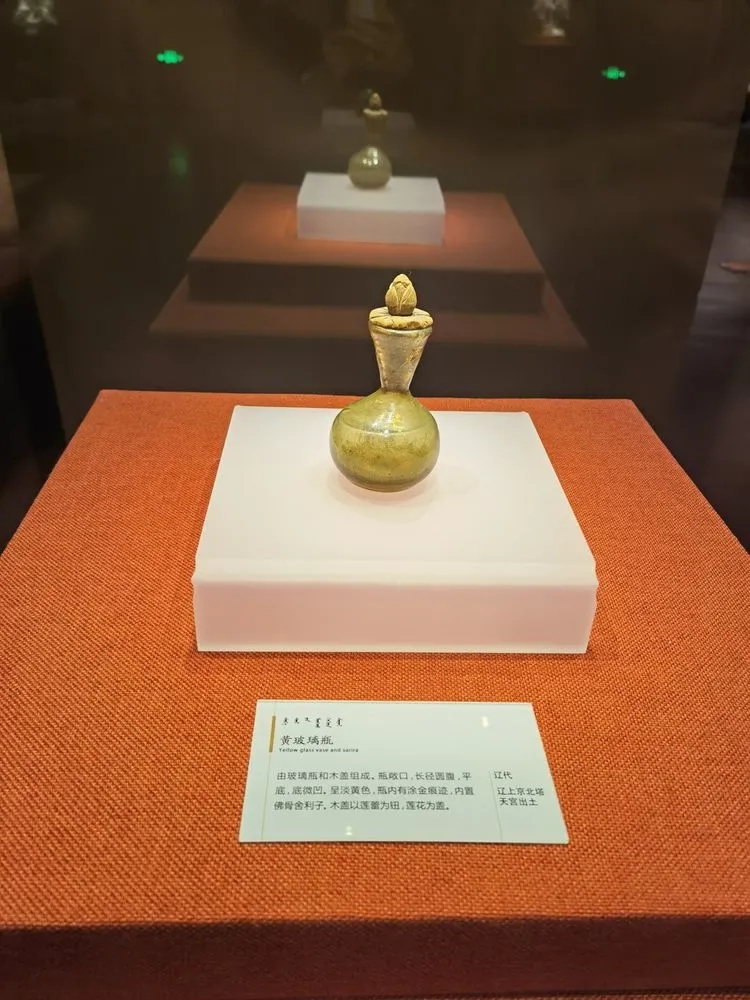
The Southern Pagoda of Shangjing, a brick structure 2.5 kilometers away from the Shangjing site, is also known as the Kaiwu Temple Pagoda of the Liao Dynasty. There were 84 Buddha relief carvings decorating the pagoda, but only 21 of them survive today. All of them are national first-class cultural relics.

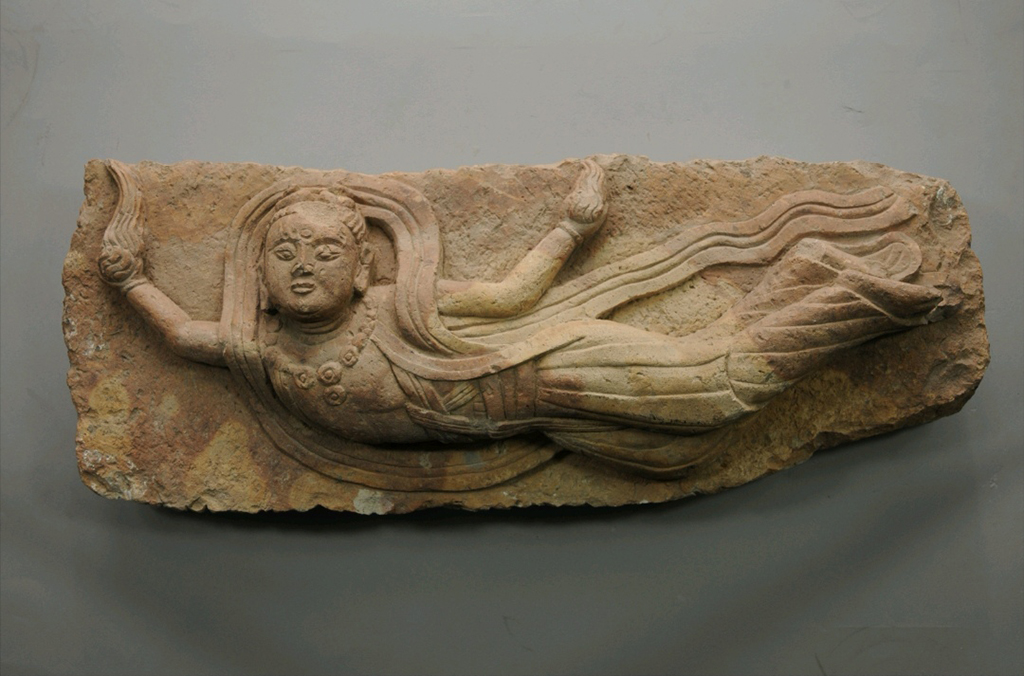
From July to October 2012, many clay statues of Buddha were excavated from the Xishanpo site of Shangjing. Some of the figurines were painted and gilded, boasting realistic facial expressions. The Liao Dynasty Shangjing Xishanpo Buddhist temple site in the imperial city was listed by the State Administration of Cultural Heritage as one of the Top 10 Archaeological Discoveries of 2012.
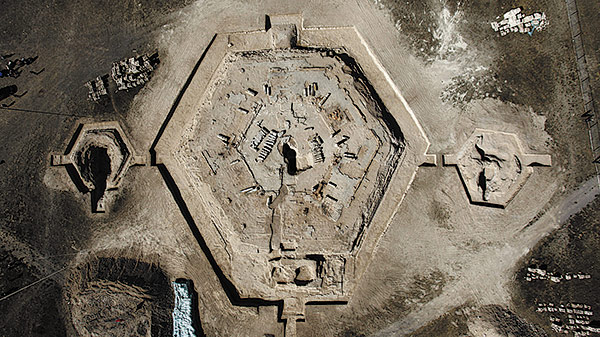
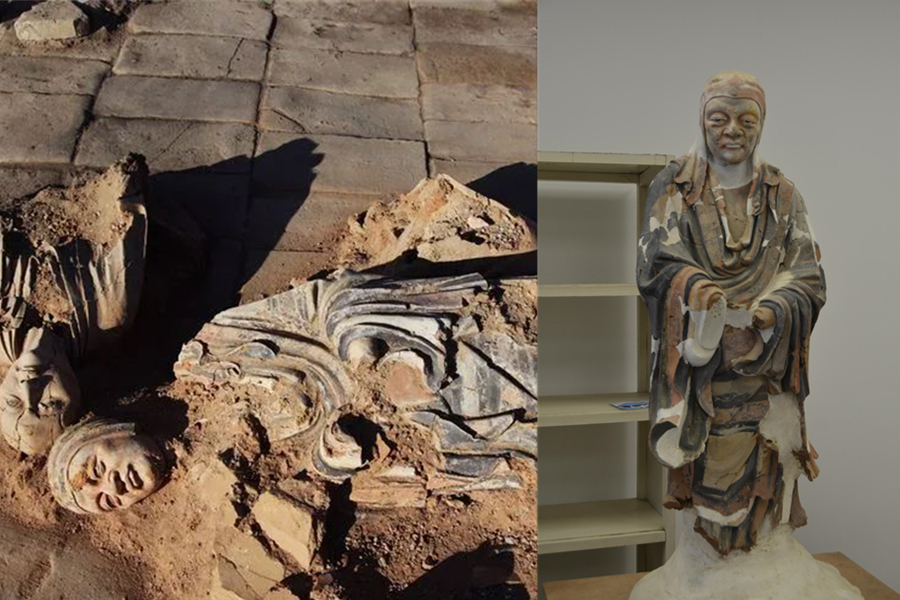
Brilliant Liao Dynasty murals
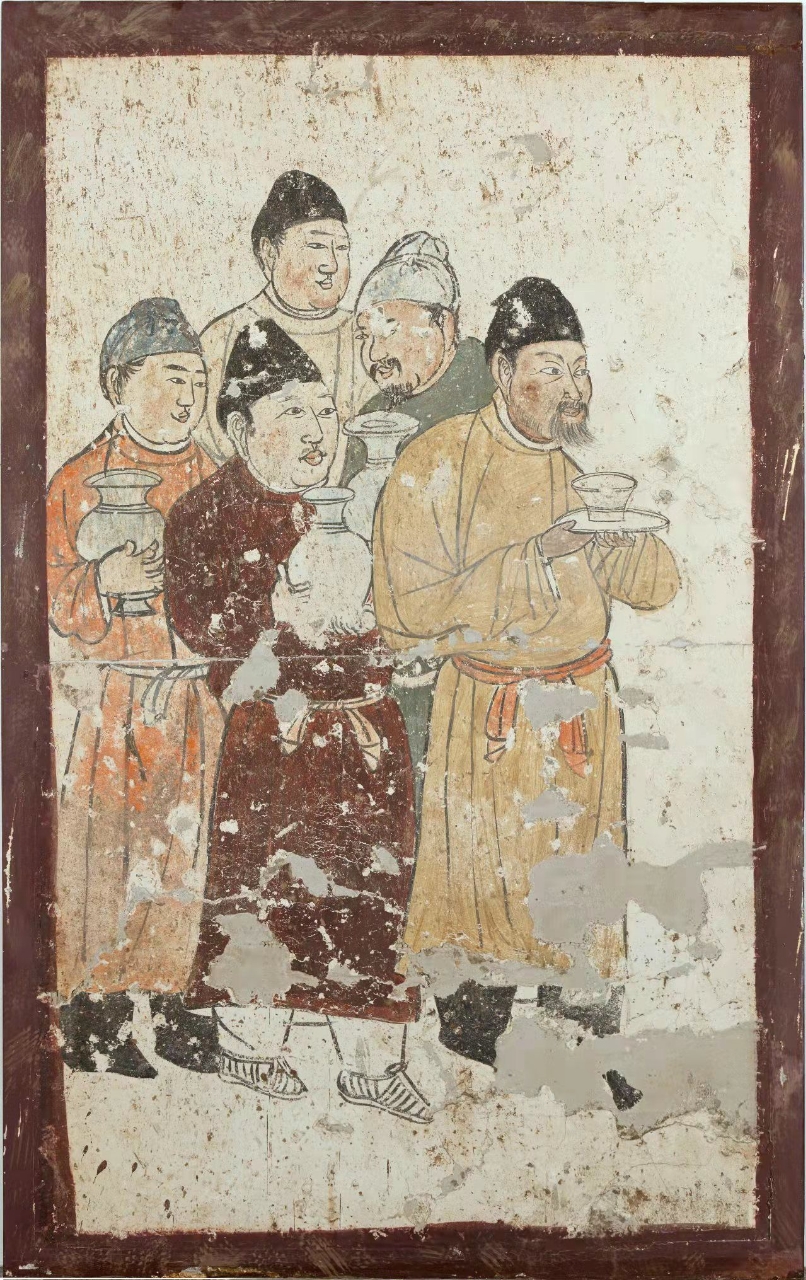
The Khitan people believed in Shamanism, which held the belief that the spirits of men could be immortal after their death. Hence, lavish burials were popular during the Liao Dynasty. Luxurious tomb chambers were built in accordance with the living conditions of the deceased. Apart from funerary objects, including valuable artifacts and household goods, there were murals drawn upon the walls of these chambers, which depicted the earthly joys of secular lives. The tomb owner’s prominent social status would be reflected by images of servants, horses and carriages on the walls of the tomb’s passages and chambers.

Meaningful Khitan entombed epigraph
An epigraph is a square stone slab carved with a brief account of the life of the deceased. Usually covered with a lid, it is a commemoration of the dead and a carrier of the spirit of the deceased.
Abundant information is contained within an epigraph, providing additional knowledge to the official history record. They are of great significance for further research on historical figures, events, geography, institutions, culture and customs.
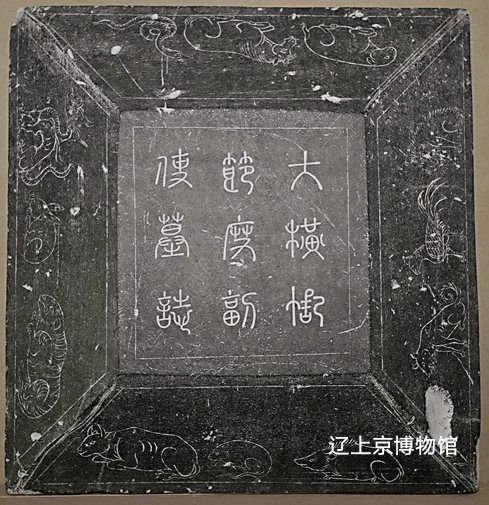

The size of Liao Dynasty epigraph stone slabs is dependent on the owner’s status and hierarchy. An epigraph may be written in Chinese characters or Khitan scripts. Regular script is often used in the writing of Chinese-character epigraphs.
Contemporary Shangjing ruins: popular scenic spots
The Liao Dynasty Shangjing Museum is the only museum dedicated to the history of the Liao Dynasty’s imperial capitals in China. It was established in 1959 and opened to the public in May of 1984. It started offering free admission to visitors from 2009. The new branch of the museum was built in 2018 and is located in the west of Shangjing; it features Liao Dynasty culture and history.
There are three floors in the new building, with each housing permanent exhibitions illustrating the dynastic history of the Liao, the art of the Liao tomb murals, Khitan religious beliefs, Liao Dynasty entombed epigraphs, Khitan funeral customs and the history of Baarin Left Banner.
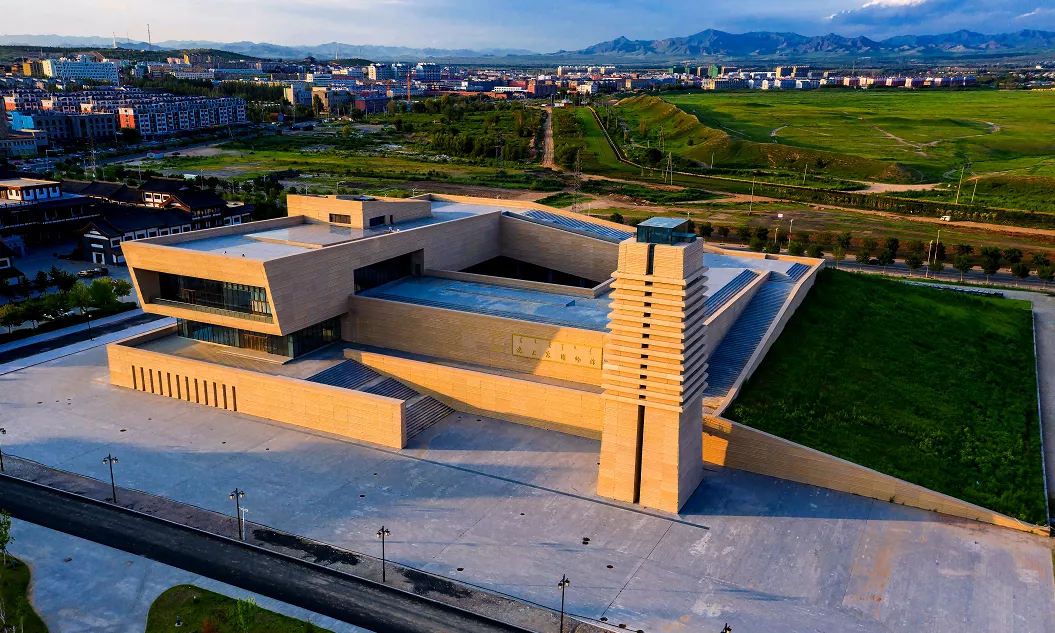
The Liao Zuling Mausoleum, located 30 kilometers west of Lindong town in the Baarin Left Banner, is the mausoleum of Liao Taizu Emperor Yelyu Abaoji and his empress Shulyu Ping. Construction of the mausoleum was completed in 927. It was included in the fifth group of major historical and cultural sites for foremost protection at the national level, in 1988.
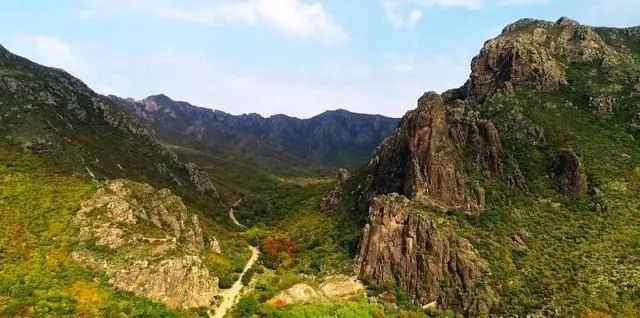
Local food and cuisine
The food of Baarin Left Banner shares similar qualities with Inner Mongolian food. It is delicious and worth trying when visiting the Shangjing ruins.
Mutton eaten with hands
Fat and tender mutton is boiled with salt. When eating, one hand holds the mutton and the other hand uses a knife to cut the meat, which is succulent and flavorsome.

Hada pancake
The Hada pancake is a famous snack in Chifeng, also known as Ulagan Hada, in Inner Mongolia. The crispy pancake is made of flour and used like a pastry to encase a sweet filling.
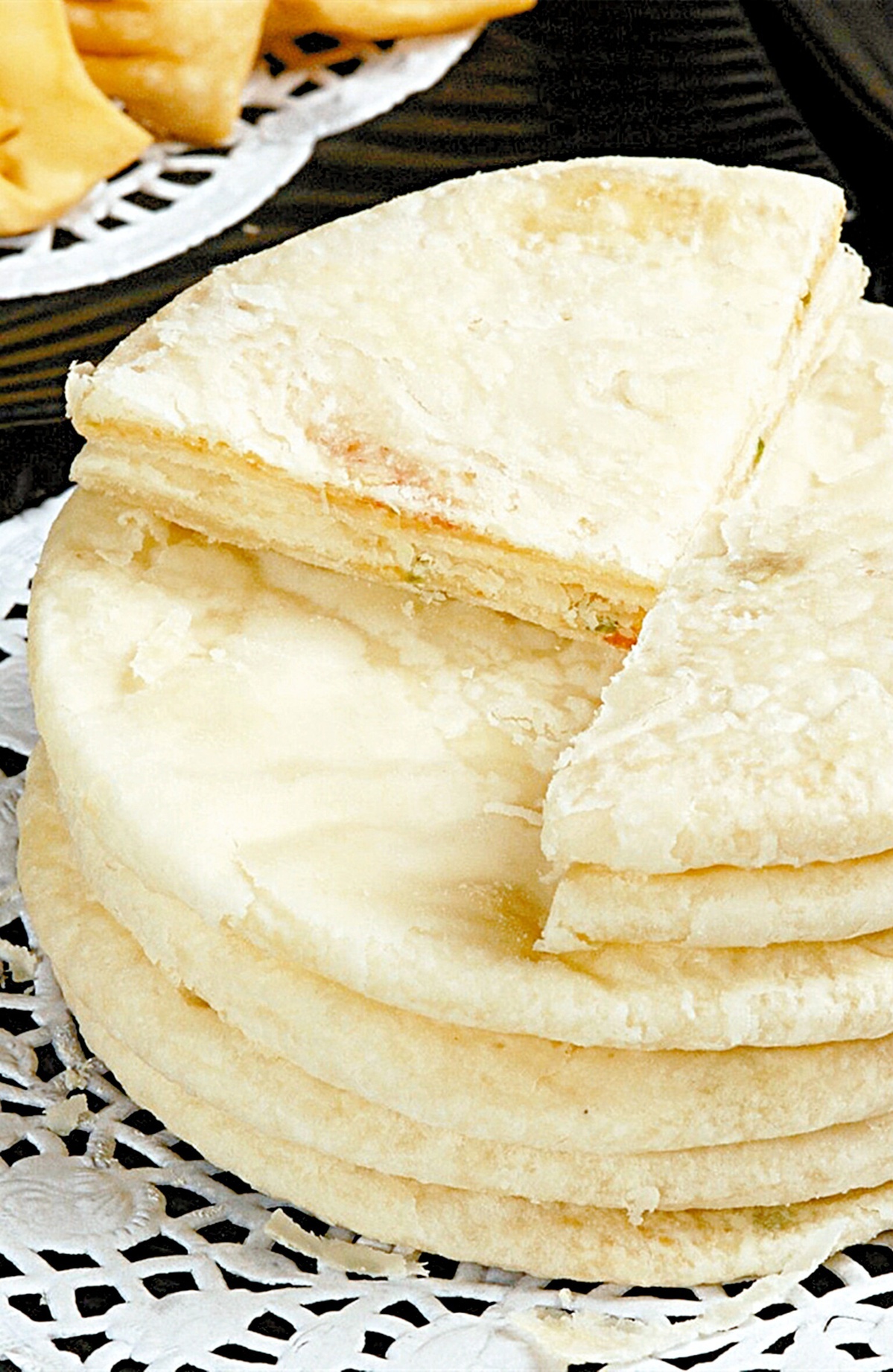
Duijia
Duijia, or Chifeng Hamburger, is a specialty of Chifeng, Inner Mongolia. Crispy and golden pastry hugs crispy bacon and tender meat of different flavors.
